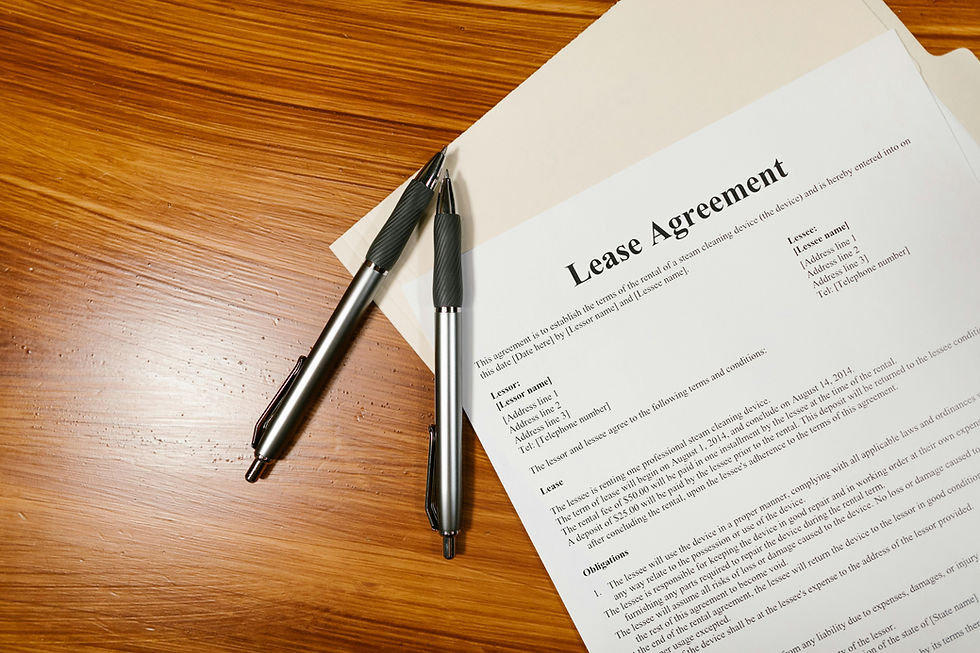Top Five Key Factors That Impact the Value of a Space
- eweinblatt3
- May 15
- 3 min read
Updated: May 20

Whether you're buying, selling, renting, or investing in property, one crucial question always arises: What determines the value of a space? The value of a physical space—be it residential, commercial, or industrial—is shaped by a variety of tangible and intangible factors. Understanding these variables helps homeowners improve their property’s worth, investors identify high-value opportunities, and buyers make informed choices.
Let’s explore the top five key factors that significantly impact the value of a space.
1. Location: The Golden Rule and the key factor of Real Estate
“Location, location, location” isn’t a cliché—it’s a cornerstone of property value. The geographic position of a space has a profound influence on its desirability and worth.
Why it matters:
Accessibility to roads, highways, and public transportation boosts convenience for residents and employees.
Proximity to schools, hospitals, shopping centers, and recreational facilities can raise demand and pricing.
Neighborhood quality—including safety, cleanliness, and aesthetic appeal—strongly influences value.
Zoning and future development—areas earmarked for future infrastructure or commercial projects often see appreciation.
Example:
A compact two-bedroom apartment in a city-center location can cost more than a spacious suburban home simply because of the convenience and demand driven by the location.
2. Size and Layout: More Than Just Square Footage
While overall square footage is a key metric in valuing real estate, how the space is designed and laid out often matters more than raw size.
Why it matters:
Functional layout enhances usability. Open floor plans, well-placed windows, and intuitive flow can make a smaller space feel larger and more livable.
Room count and flexibility—spaces with multipurpose rooms or home office potential appeal to modern buyers and renters.
Outdoor areas like balconies, terraces, or gardens add premium value, especially in urban environments.
Pro Tip:
A well-designed 1,200 sq. ft. home with smart storage and an open-plan kitchen might be more desirable than a poorly laid out 1,500 sq. ft. one.
3. Condition and Maintenance: First Impressions Matter
A space’s physical condition—both visible and structural—plays a huge role in how it is perceived and valued.
Why it matters:
Renovations and updates (e.g., new floors, modern kitchens, upgraded bathrooms) can substantially boost value.
Ongoing maintenance signals care and reduces future costs for potential buyers or tenants.
Energy-efficient systems and compliance with building codes add both safety and economic value.
Age of property—older buildings often require more maintenance, though historic charm can sometimes offset this.
Red Flags to Avoid:
Leaky roofs, outdated wiring, mold, or foundation issues can drastically reduce a space’s market value.
4. Amenities and Features: Enhancing Everyday
Experience
Beyond the basics, extras and enhancements can make a space stand out. In competitive markets, the right features can be the deciding factor for potential buyers or renters.
Why it matters:
Security features like gated entries, CCTV, or smart locks provide peace of mind.
Conveniences such as parking, elevators, laundry facilities, and fitness centers are often non-negotiable.
Aesthetic features like natural light, ceiling height, and high-end finishes add emotional appeal.
Sustainability features such as solar panels, water-saving appliances, and energy-efficient windows are increasingly valued by eco-conscious buyers.
Did You Know?
Smart home features—like app-controlled lighting, thermostats, and security—can increase a property’s perceived value significantly among tech-savvy demographics.
5. Market Trends and Economic Environment: Timing Is Everything
Real estate is not isolated from economic forces. The macro environment and local market trends heavily influence how much a space is worth at any given time.
Why it matters:
Interest rates affect mortgage affordability and thus buying behavior.
Local supply and demand dynamics determine price direction.
Economic health of the region—job growth, income levels, and business activity—affect property desirability.
Government policy including tax incentives, subsidies, and zoning laws can raise or lower property values.
Market Insight:
During a boom, even average properties can sell at a premium. In a downturn, only well-located and well-maintained properties hold their value.
Conclusion: Looking at the Bigger Picture
The value of a space is not determined by one factor alone. It's a holistic equation, blending tangible elements like location, size, and features with less visible ones like market trends and future development potential.
Whether you’re planning to sell, invest, or simply improve the space you own, considering these five key factors can help you make strategic decisions. It's also wise to regularly monitor local market conditions and consult with real estate professionals to get the most accurate valuation.


